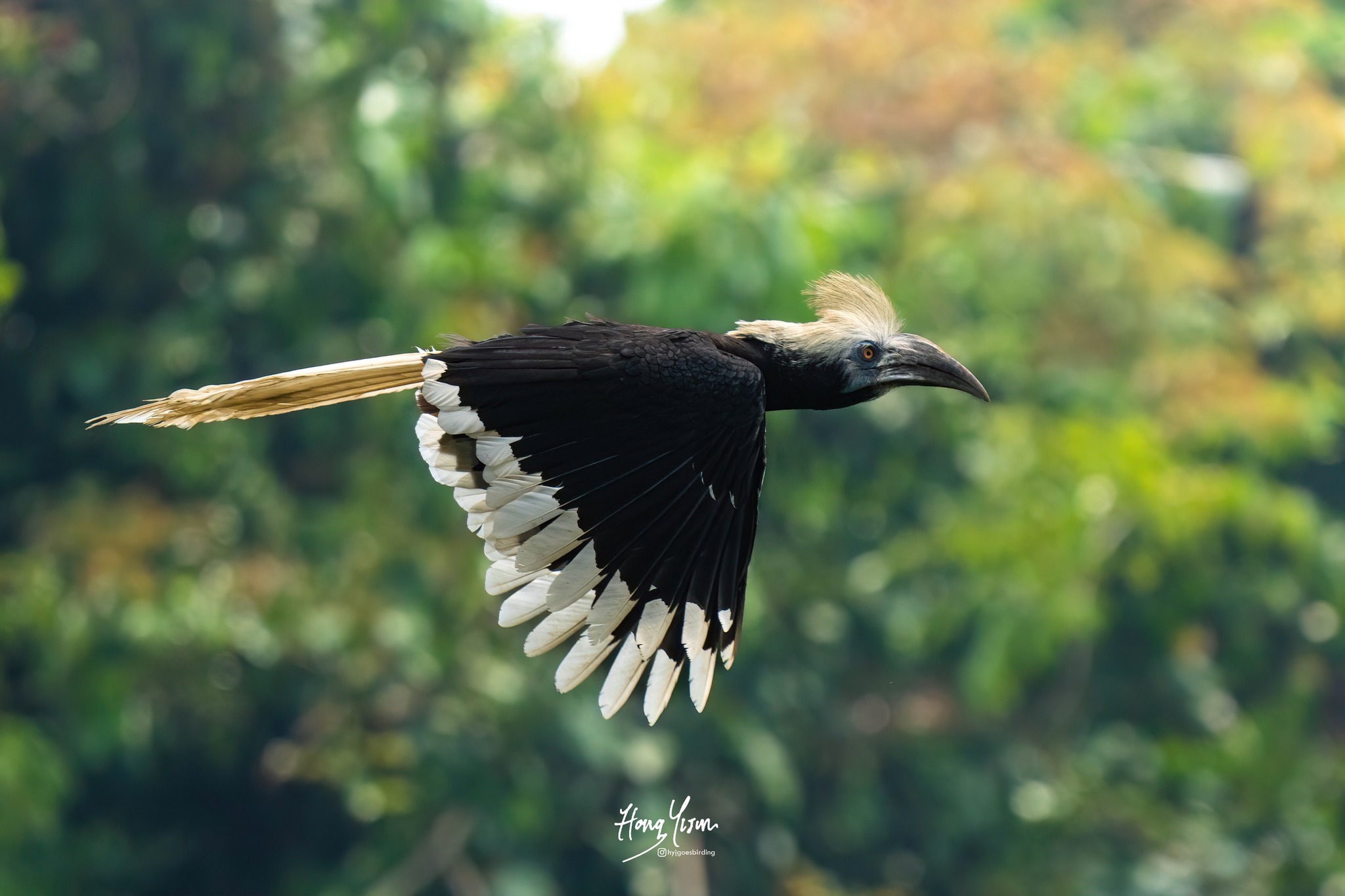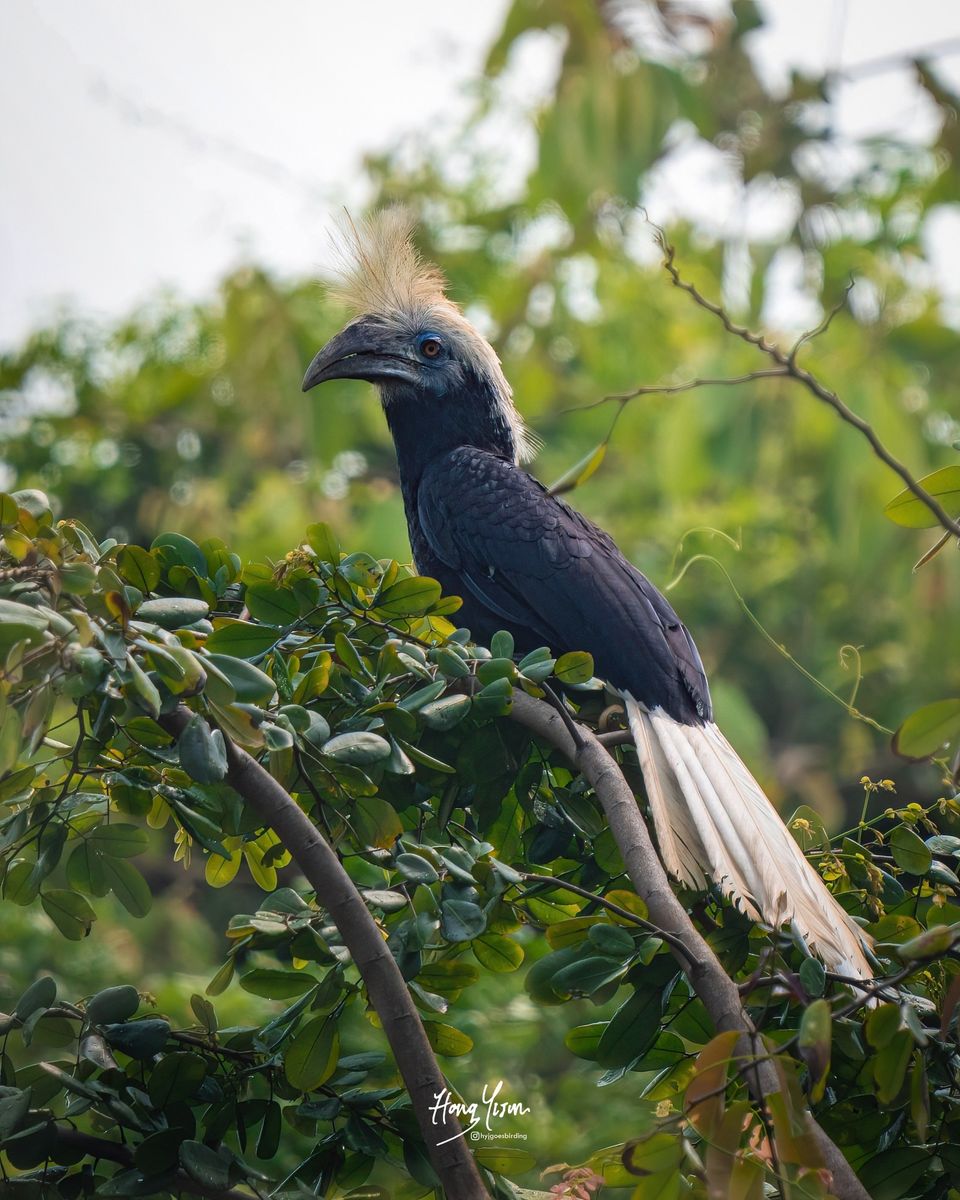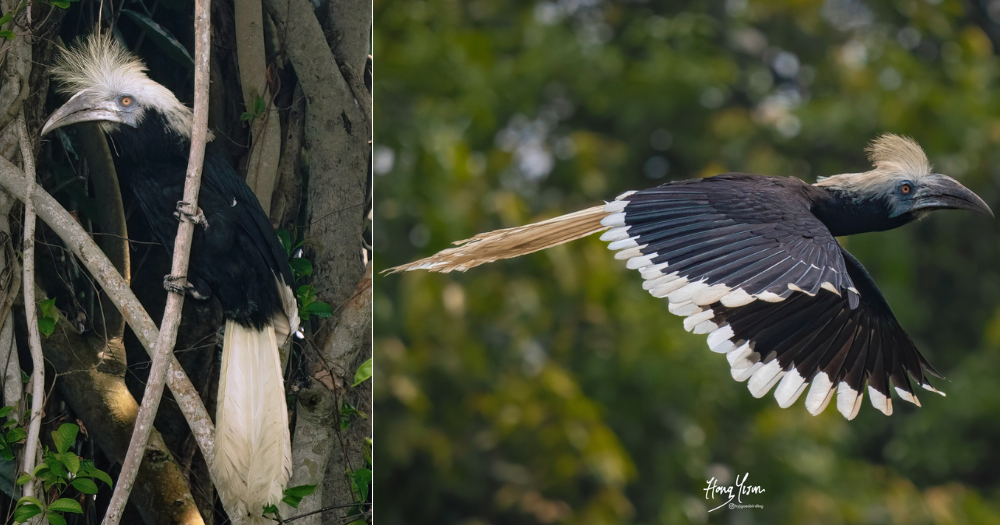Follow us on Telegram for the latest updates: https://t.me/mothershipsg
Pulau Ubin welcomed a rare avian guest on Sunday (Apr. 16).
A White-crowned hornbill, listed as endangered on the International Union for Conservation of Nature (IUCN) Red List, was seen soaring over the skies of Chek Jawa Wetlands.
The bird's appearance at Chek Jawa caused a stir among the local birdwatching community, with several enthusiasts sharing photos of it on Facebook.
Birdwatchers contended with rain
Hong Yijun, one of the birders who caught sight of the hornbill, shared with Mothership that it was two birdwatchers — Kiri Zhang and Han Jinchi — who first spotted the hornbill at Chek Jawa Boardwalk.
The news was then shared in chat groups with other birdwatching enthusiasts.
Upon hearing the news at around 11am, Hong, along with his wife and friends, headed towards Ubin and arrived just before 1pm.
Hong recalled observing the hornbill perch in the trees and take flight twice, before it starting raining at about 1:45pm.
The downpour stopped at 2:30pm. The hornbill then gave the birdwatchers a sight to remember, Hong recounted.
"The hornbill appeared at one of the trees right in front of us and it started calling, although it was partially blocked. It then flew out and back in a few times, much to our joy as that allowed us to capture the hornbill in flight. It also perched openly for us, and we were able to capture it with our telephoto lenses."
The bird was feeding on fruiting trees along the Chek Jawa coastline, Hong described in his Facebook post.
Here are the photos Hong captured of the rare bird:
 Photo courtesy of Hong Yijun.
Photo courtesy of Hong Yijun.
 Photo courtesy of Hong Yijun.
Photo courtesy of Hong Yijun.
 Photo courtesy of Hong Yijun.
Photo courtesy of Hong Yijun.
 Photo courtesy of Hong Yijun.
Photo courtesy of Hong Yijun.
According to Hong, the presence of the hornbill "sent shockwaves" through the birdwatching community, and attracted about 40 people throughout the time he was there.
Hong left at around 3:30pm, but he remarked that based on photos by his friends, the bird remained in the area past 4:30pm that afternoon.
Besides birdwatchers, the hornbill had also attracted the attention of curious passers-by, one Andy Chew shared.
Chew is also a birdwatching enthusiast who went down to Chek Jawa on Sunday after hearing about the hornbill.
In his Facebook post shared on Nature Society (Singapore), Chew opined that this individual was a female, owing to its predominantly black plumage from its head to its belly.
Males would have a white plumage.
Chew stayed for about two hours, and captured these shots of the bird:
 Gif composite of hornbill in flight from photos courtesy of Andy Chew.
Gif composite of hornbill in flight from photos courtesy of Andy Chew.
 Photo courtesy of Andy Chew.
Photo courtesy of Andy Chew.
 Photo courtesy of Andy Chew.
Photo courtesy of Andy Chew.
 Photo courtesy of Andy Chew.
Photo courtesy of Andy Chew.
Noteworthy sighting
Movin Nyanasengeran, a member of the Singapore Birds Project (SBP) and PhD student at the National University of Singapore's (NUS) Avian Evolution Lab, shared that the record for Sunday's sighting is still being evaluated.
According to the SBP online database, the only previous record of the bird in Singapore was in 1987 at the Singapore Botanic Gardens, and that individual was an escapee.
This makes Sunday's visit by the White-crowned hornbill even more noteworthy.
"It seems likely that the bird is a wild one given that it appeared in Ubin where a number of other visitors from Malaysia have turned up recently, such as the Black-and-white bulbul," Movin commented.
Hong noted that the bird's legs were not ringed, and speculated that if it is a vagrant from another country, it could have been displaced due to habitat loss "up north".
"Another thing is that it’s generally quite a rare bird even in places where it’s known to breed. So, having a bird [of its kind] turn up in Singapore is quite special," Movin added.
The White-crowned hornbill is typically found in Sumatra, Borneo, southern Myanmar and from Thailand to Johor, its profile on SBP describes.
Its diet mainly consists of animal food, including snakes and small birds, as well as fruits.
Top image courtesy of Hong Yijun
If you like what you read, follow us on Facebook, Instagram, Twitter and Telegram to get the latest updates.
